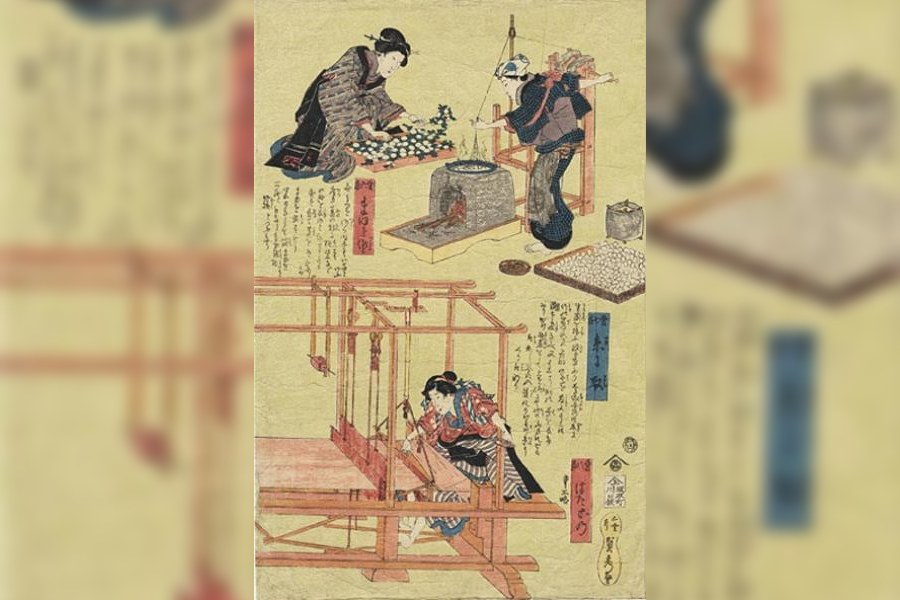Book: Silk: A History in Three Metamorphoses
Author: Aarathi Prasad
Published by: HarperCollins
Price: Rs 699
Perhaps no other raw material has escaped the trappings of mundanity associated with evolution save for silk. These “finer than a human hair”, exotic, lustrous strands of fibre as well as their magical metamorphosis from the Lepidoptera caterpillars, their inextricable links with the history of global trade, and their application in diverse sectors have enchanted humans for centuries. A sweeping knowledge of silk may have eluded humanity, but the cultural and mythological currency of the fabric has only strengthened over time. In Silk: A History in Three Metamorphoses, Aarathi Prasad traverses the intersecting worlds of history, archaeology and biology in an attempt to unveil the expansive tapestry of the fabric.
In Part I, Prasad refers to archaeological excavations as well as the contributions of scientists, such as the 17th-century naturalist, Maria Sibylla Merian — she studied the silkworm’s reproduction process — the biologist, Marcello Malpighi — who dissected the silkworm — and Thomas Wardle — he studied it under the microscope — to uncover the “inner workings” of this fascinating creature. While the nomenclature by Carl Linnaeus is accorded a cursory glance, Prasad remains deeply invested in debunking the myths surrounding the domestic silk moth (Bombyx mori): the conjurer of the luxury fabric was, in fact, domesticated and manipulated by Chinese farmers about 5,000 years ago which left them “completely dependent on humans for… survival.”
Part II dabbles in the alternative producers of silk — the fine filaments extruded by the Pinna nobilis, a Mediterranean clam, that became a hit among the royals, and the “spider silk” of Madagascar co-opted in war technology because of its tensile strength. Prasad fuses an information-heavy narrative with delectable anecdotes — perhaps if Archduke Franz Ferdinand of Austria had worn his silk-made bulletproof vest on the morning of June 28, 1914, it would have saved humanity from the catastrophic First World War. Close-up photographs of the insects and their anatomical dissections, paintings of royals in silk attires and of ancient silk production machinery — they echo the white and red embossment of silkworms against the green, textured front cover — complement the text and, at times, lend a touch of organisation to Prasad’s prose that tends to collate disparate topics.
A common thread joining historical moments with the evolutionary trajectory of silk is Prasad’s citation of the silkworm’s applications in the military-industry complex: Bombyx mori worms were “recruited” by Hitler for the production of parachutes despite failing the “eugenic fitness” test.
The industrial relevance of the silkworm has since continued, albeit for purposes that are truly therapeutic. Part III elucidates how these transparent materials of “natural protein” can be used as biodegradable electronics — a means to end the menace of electronic waste — and in delicate surgeries. These modern-day uses are likely to strengthen the allure of the raw material for humanity.










